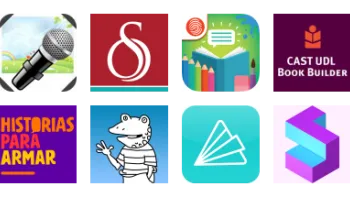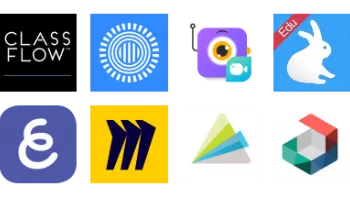Take a look inside 6 images
Wakelet
Pros: Easily curate and share media/content. Variety of layouts allows for creative displays.
Cons: Lacks two-way communication, tagging, and feedback features. Kids could stumble on or share inappropriate content.
Bottom Line: This tool offers an intuitive and useful way to curate media and make sense of topics, but it lacks some features for feedback and content moderation.
Since Wakelet is geared for curation and sharing, it's versatile enough to use for instructional design, research, story-based learning, and collaboration. Pair it with Flipgrid or Screencastify to design a lesson that lets students interact with content instead of just hearing a lecture or set of instructions. Use it for research: Students can save links to content, take notes, and upload videos from YouTube or Google Drive. Or use it to tell a story: Collect content from all over the web to tell a story about a current or historical event, and have students share collections with their peers and up-vote their favorite resources.
Looking for creative alternatives to traditional assignments? Ditch the busywork and let students use Wakelet as a digital journal where they post content, upload pre-recorded video explainers, add photos, and even add items from Twitter, Adobe Creative Cloud, and more. Instead of the traditional exam or essay, let students submit portfolios to show content mastery.
Finally, consider Wakelet for professional development (PD). Educators share the common frustration of trying to find a way not only to organize content, but to present it to colleagues in meaningful and engaging ways. Delivering PD as a story or series of items to explore can be a fresh way to share information (synchronously or asynchronously) and best practices with colleagues. For even more interaction, consider letting colleagues search for and add their own related content.
Wakelet is a content curation and sharing platform where teachers and students can save and organize links, social media posts, videos, and images. These collections might tell a story, give directions, deliver lessons, gather research, or encourage collaboration. Collections come in various layouts, such as columns, grids, or mood boards on a scrollable page. These collections can be kept private or shared publicly. They can be viewed on the site, through the mobile app, or shared elsewhere, including on social media. The Media View allows teachers and students to view items without leaving the site.
Teachers can create classroom spaces and use them to share things just with their students, and/or have students create and share their own collections. It's important to check links before assigning a collection to make sure they work, keeping in mind that school filters might prevent students from accessing some material. Wakelet's classroom features are fairly simple. There's no two-way communication or ways to give or receive feedback other than through adding another resource, such as a note or feedback video, to the collection. Be wary that some students might share or come across content that's not school-appropriate, so you'll want to keep a close eye on the collections as they grow.
Since teachers and students can curate content from virtually anywhere, it's easy to design Wakelet collections that promote learning. It helps teachers change up lesson flow, integrating videos, images, notes, and social media posts from their own curricular stash or outside sources. Wakelet also makes it possible to differentiate instruction, providing students with choice and assortments of material that match their needs and abilities. Plus, students can refine their own collections, honing their research and organization skills. Teachers can gain valuable insight into student learning (while preventing plagiarism) by getting students to add descriptions or annotations to their curations. Students can also teach their peers about a topic by creating and sharing collections.
Wakelet is a little too rooted in content consumption; as a result, it's tough to assess whether or not students are really learning. It'd be great to see Wakelet add some feedback and two-way communication tools to help make collections more dialogic. Massive collections might also be too much for students to process. Therefore, it'd likely be better to limit collections to four to six pieces of solid content at first, and give students a chance to learn about a concept or tell a story with some depth. Also, it's easy to get sidetracked by collections shared by classmates, especially if they're related to celebrities, pop culture, or other topics that stray from curricular objectives. Teachers will want to have a clear strategy to monitor collections, assess learning, and give feedback.















